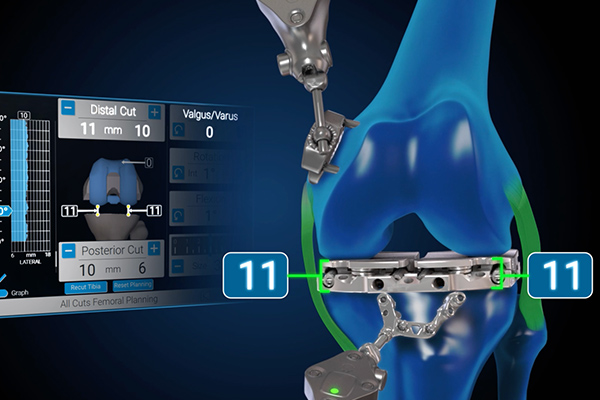Journal of Arthroplasty
Wen Fan 1, Laurent D Angibaud 1, Amaury Y Jung 2, Cyril M Hamad 2, Mark B Davis 3, Brian J Zirgibel 4, Jake C Deister 5, James I Huddleston 3rd 6
Background: This study evaluated the ability to achieve the targeted soft-tissue balance in terms of medio-lateral (ML) laxity and gap values when using a computer-assisted orthopedic surgery (CAOS) system featuring an intra-articular force-controlled distractor and assessed learning curves associated with the adoption of this technology.
Methods: The first 273 cases using this technology were reported without exclusions comparing 1) final ML laxity and 2) final average gap to their predefined targets. For both parameters, the signed and unsigned differentials were reported. The linear mixed model was used to evaluate laxity curve differences between surgeons. A cumulative sum control chart (CUSUM) was applied to assess surgeon learning curves regarding surgical time.
Results: Both the average signed ML laxity and gap differentials were neutral throughout the full arc of motion. Both the average unsigned ML laxity and gap differentials were linear. Signature of ML laxity and gap differential curves tended to be surgeon-specific. The CUSUM analyses of surgical times demonstrated either a short learning curve or the absence of a discernible learning pattern for surgeons.
Conclusion: Data from all users involved with the pilot release of the balancing device were considered to capture variability in familiarity with the technique and learning curve cases were included. A high ability to achieve targeted gap balance throughout the arc of motion using the proposed method was observed.



